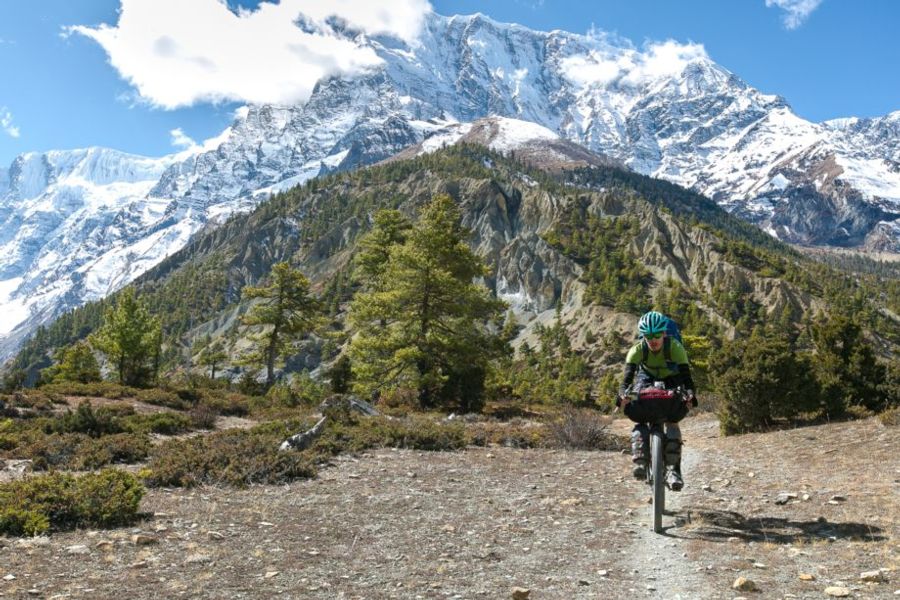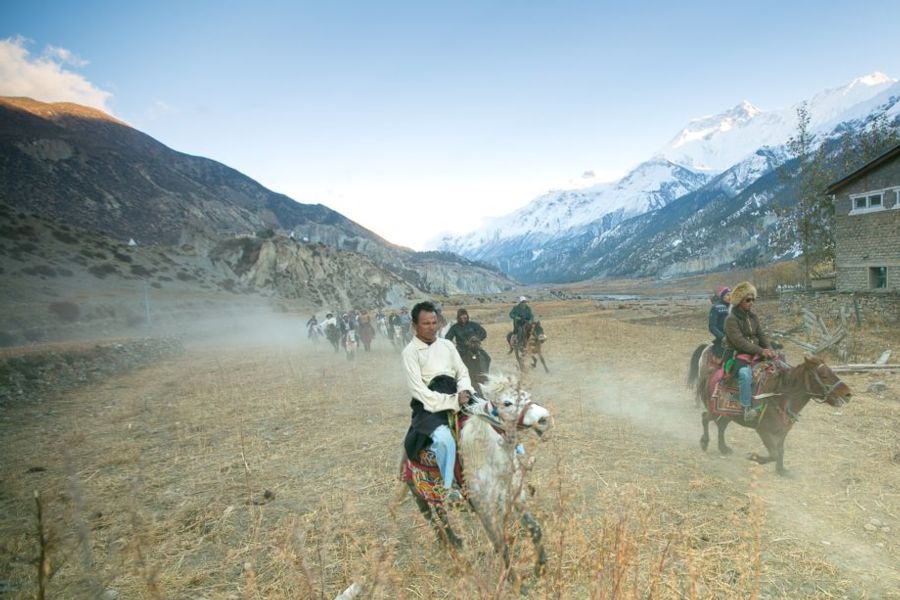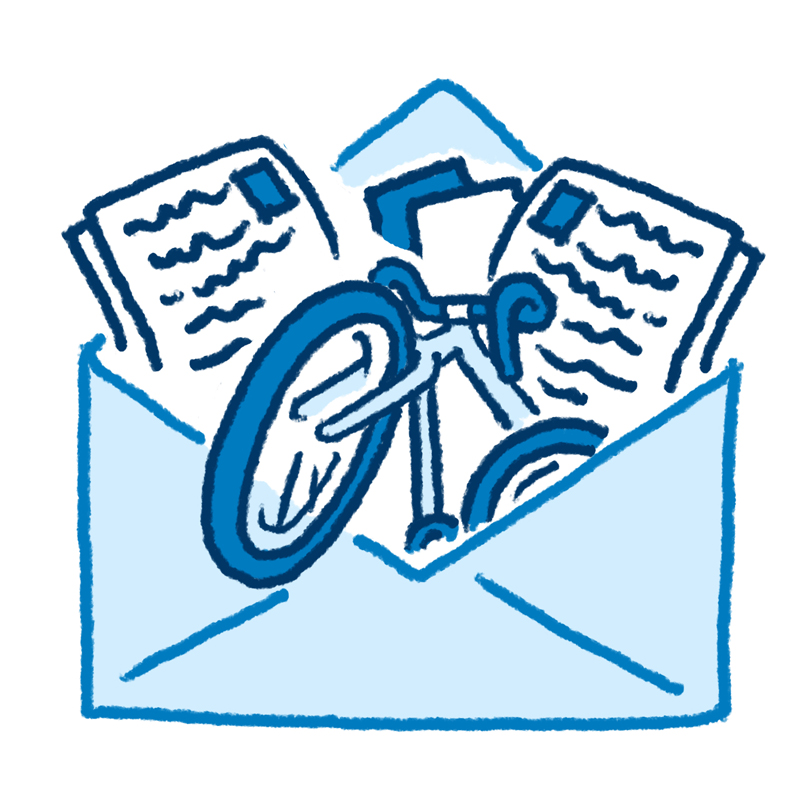Annapurna Circuit by Bike
I read that the Annapurna Circuit’s newly-built road “ruined” the classic trek. I read that the circuit’s “integrity” was destroyed. That it “wasn’t what it used to be.” That it might not even be “worth doing.”
Don’t believe everything you read. This past fall, when I pedaled in the shadow of the highest peaks on earth, the Himalayas were still unspoiled and the people still kindhearted.

While the road has enraged some trekking purists, it has allowed local villages to thrive from connectivity. It’s also unintentionally created a thrilling new way for intrepid travelers to explore by mountain bike — where thousand-foot cliffs are just a few pedal strokes away and rickety suspension bridges become a game of chicken with caravans of loaded yaks.

This once-in-a-lifetime experience can be overwhelming to plan, but that shouldn’t stop you from checking the circuit off your bucket list. Here are the nuts and bolts to make this trip a reality:
Bike & Carrying System
As with any bike tour, there are myriad ways to haul your gear, but keep in mind the route you’ll be riding on: a steep, technical jeep track and trekking trail. A touring bike with a traditional rack-and-pannier setup won’t give you the most enjoyable riding experience. A mountain bike is better matched for the rugged terrain and a frame bag carrying system is well balanced, lighter weight and won’t rattle or break in the rough off-road conditions. You’ll have access to a reputable bike shop in Kathmandu, but once you’re on the trail, it’s up to you to repair or replace anything that goes awry. Bring the appropriate extras and tools for the job.


Accommodations
The term “teahouse” originated when locals on the circuit began inviting weary travelers inside their home and offering them a bit of floor space and tea. Today, the route is overflowing with lodging still run by villagers who are more than happy to serve you tea, but houses have since evolved into quasi motels that contain beds, meals, a shower and toilet. You’ll be sleeping on a foam mattress and at times may share a bathroom and shower with other guests depending on the teahouse. Bring basic toiletries to clean and groom yourself, a warm sleeping bag as the provided blanket might not keep you warm enough, and something to keep you entertained in the evenings. Leave your tent behind.

Clothing
You’ll need to pack everything from a thin short-sleeved base layer for the toasty jungle at the start of the ride to insulating layers for higher, colder altitudes. Regulating your body temperature along the route is crucial and layering is the best way to do it. Remove articles of clothing when you work up a sweat and add them back when you lose your warmth. Cotton stays wet and extracts heat from your body. Leave it at home. Choose merino wool instead. It’ll wick away moisture, dry fast and repel odor. A hat, gloves, wind- and waterproof jacket and pants are essential and can double as warm layers. Extra clothing is strongly discouraged as it adds unnecessary weight.

Food
“Dal bhat power, 24 hour?” Not quite. A few decades ago you might have chowed down on the traditional Nepalese dish of steamed rice and lentil soup as frequently as the notorious saying implies. These days, teahouses offer several-page menus full of temptations like pancakes, fried eggs, curry, lo mein, dumplings, noodle soup, pizza and, yes, even dal bhat. While you’re unlikely to eat the best meal of your life, it’s nice to have options at the end of each day. Most teahouses will request that you eat dinner and breakfast under their roof while charging you nothing—or next to it—for lodging. Stock up on snacks in Pokhara before you begin and at the tea houses each morning, and you won’t go hungry in between meals.

Altitude
The tallest point of the Annapurna Circuit is Thorong La pass at 17,768 feet, which is likely to be the highest altitude you’ve pedaled a bicycle, or close to it. Weather and altitude sickness are two very real threats that cause many tourists to be airlifted off the trail every year. The best way to prevent altitude sickness is to ride slowly, acclimatize above 10,000 feet and listen to your body. You can also neutralize the effects of altitude sickness—or prevent it entirely—with acetazolamide, a medication that reduces headache, fatigue, dizziness, nausea and shortness of breath. If you have the time, wait until you’re in Nepal to buy the medicine (sold under the name Diamox) for far less than you would back home.
Maps & Permits
You’ll need to obtain two permits before riding the Annapurna Circuit: the Annapurna Conservation Area Permit (ACAP) and Trekkers Information Management System (TIMS). Bring your passport and multiple passport photos when you purchase them at the Nepal Tourism Board office in Kathmandu or Pokhara. Maps of the Circuit are for sale everywhere in both cities for a few dollars, some more durable and detailed than others.
Now — a year since twin earthquakes struck Nepal and kept an estimated 70 percent of travelers from traveling to the country — is the perfect time to visit. Nepal is still patiently waiting for adventure-seeking travelers to return in all forms.

Editor’s note: The July issue of Adventure Cyclist features a story on unicycling the Annapurna Circuit, but since most folks pedaling the route will be on two wheels, we reached out to contributor Beth Puliti, who just rode the famous circuit earlier this year.


